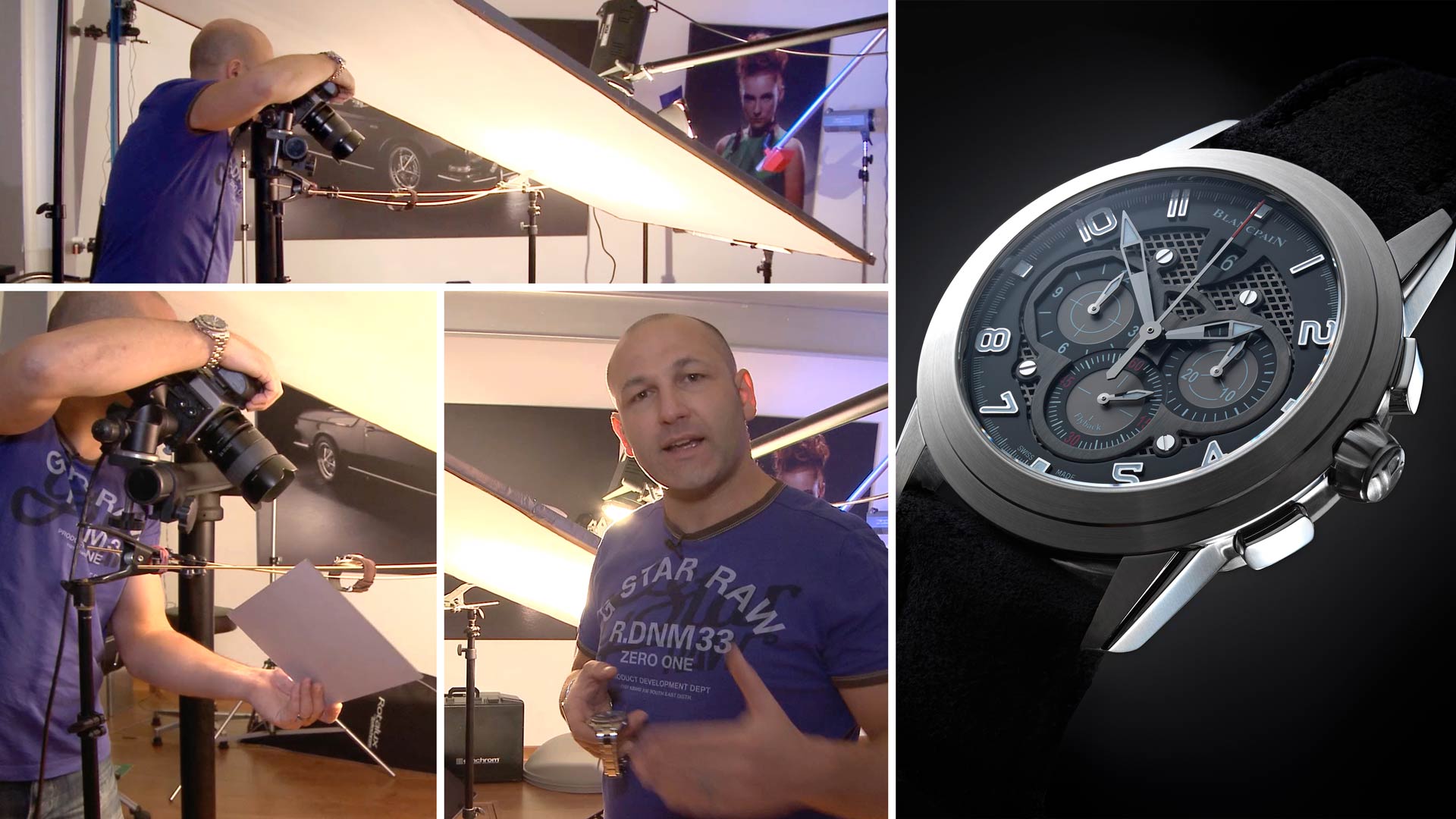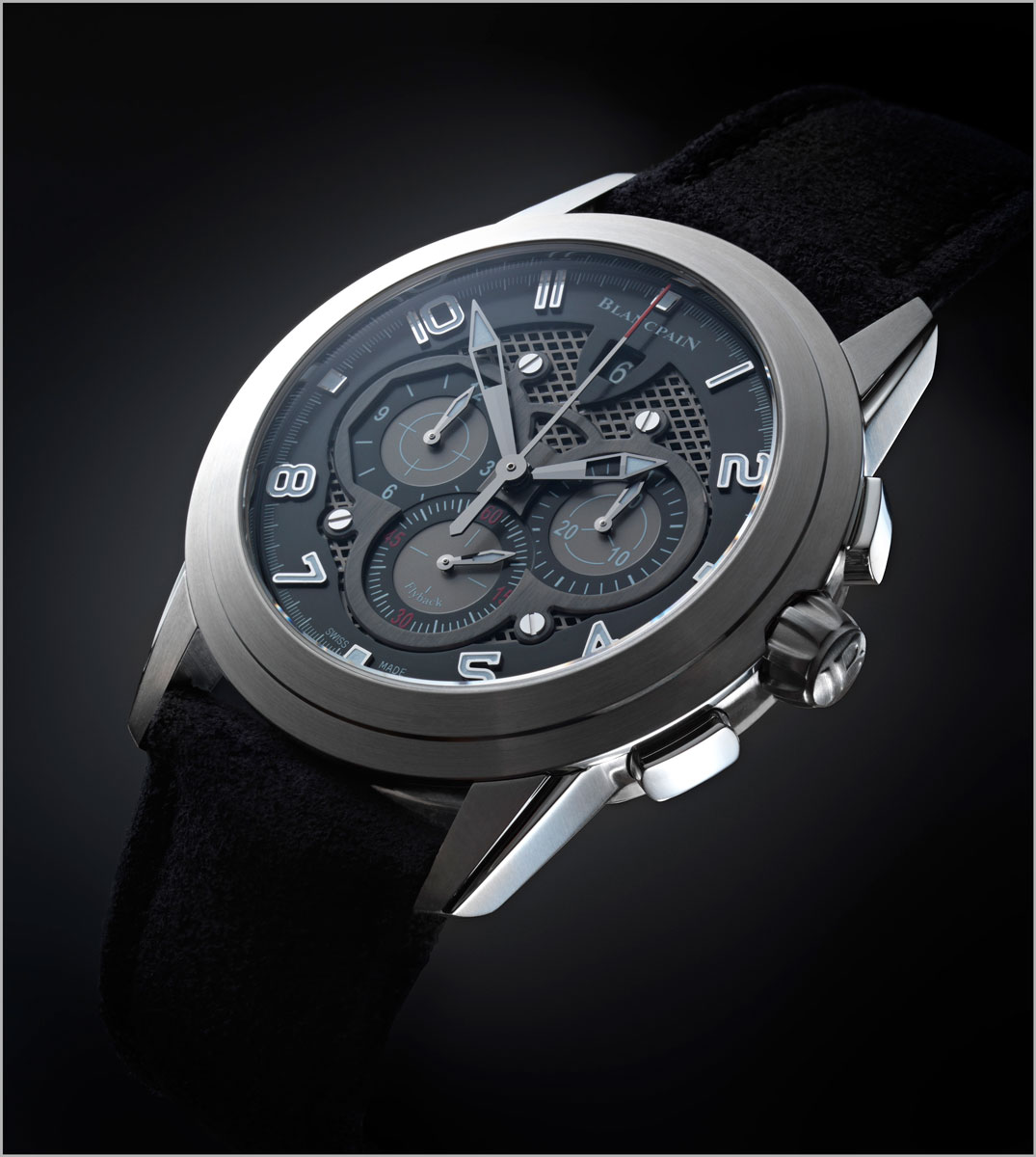Luxury Watch Photography Using One Studio Light
When a client asks you to photograph a $15,000 luxury watch, you’d better know how to make it look good.
Karl only used one light to capture this exquisite image, so everything was lit perfectly and captured in one shot. In this watch photography tutorial, he shows you exactly how you can replicate this luxurious, high-quality look in your own product photoshoots.
This photoshoot demonstrates that when you have the right photography knowledge and training, you can achieve flawless, high-end results even with just one light.
In this class:
- Product photography using one light
- How to photograph watches
- Lens choice for product photography
- How to create and control gradient light and lighting falloff
- Depth of field considerations and using focus stacking for maximum depth of field
When photographing detailed products like this Blancpain watch, there is always an element of post-production required. You can see this process in our Luxury Watch Retouching class.
To learn more about how to photograph watches, take a look at Luxury Watch Shoot 2 and Luxury Watch Product Photography (LIVE).
If you have any questions about this class, please post them in the comments section below.



Comments
Thank you. Merry Christmas.
Hi Karl, I can’t seem to find the retouching tutorial for this video. The videos in this section only go up to Module 23 and in your reply to a previous comment you say it is Module 25. Has it been deleted, or am I man looking?
Cheers
Keith
Hi Keith, I think it’s this one https://visualeducation.com/class/luxury-watch-retouching/ also if you are looking for a similar one check these two which cover focus stacking in more detail https://visualeducation.com/class/zenith-watch-product-shoot/ and https://visualeducation.com/class/zenith-watch-retouch-1-focus-stacking-and-compositing/
How do we securely suspend the watch without having it moving around?
What kind of tools do we need?
Thanks
Hi Martin, that was clearly shown in the video and another option is shown in our Live Watch shoot that you can view in the Live Shows section or was it something else that you meant?
Hi Karl!
My poor try based on your video:
-wow, distorted, blurry, bad point of view, bad light
I should leave the exposure…
http://hangyasiattila.hu/_regi/DSC_3521_edifice_lebeg_signo.jpg
Thanks for the attention!
Hi Karl!
As a dilettant, I’ve been taking pictures for hours and trying to copy the essence of this professional, more sharp focus. Failed.
It turned out I had a cheap, bad lens (Nikon Fix, 40mm, f / 2.8, Macro G) that zoomed at the focus, so the line of 6 to 7 sharpness was useless.
Now I’m saving a more serious optic:
– Nikon Af 105mm 1: 2.8 D MIRCO Niccor
or what is really profitable but expensive
– (Nikon AF-S Micro Nikkor 105mm f / 2.8 G ED N SWM VR IF)
Will these things be like that?
Nikon D7100 is my camera.
Thanks for the opportunity and attention!
Attila
Hi Attila, Nikon make some excellent lenses but unfortunately I’m not an expert on their range and I think it would be wise to search some online reviews of these lenses before you make your decision. Certainly though a 105mm macro is a good focal length.
Dear Karl!
I’m still interested in the web before deciding. Photographers who have a similar lens (sometimes see who’s taking pictures at 500px) will ask for reviews and crude test photos before buying.
Thank you very much!
Dear Karl!
Tonight I re-set the setting for another hour. Its face is simpler, but it has more of its shimmering metal surface.
This is a little bit better than the previous one, but I can not repeat the technical quality of what you are.
But it’s alright! 🙂
I learned a lot from the trial and concluded that if I’m learning, it does not matter how my technique is, not the value of the equipment. What’s important is how to learn:
1. The most important is LIGHT! The basics of lighting can be learned, then practiced, tried and applied to our own lighting devices.
2. I think the second most important is the composition, the setting. There is no need for high tech techniques, which can be learned (gold engraving, Fibonucci line, etc.), but this requires an instinctive artistic tendency, a sense of proportion.
3. “Flexibility” is very important in concrete cases not only to apply bound rules, but to improvise and adapt. Apply to the subject, the model, the lighting, the space, the available technique, everything. Obviously, a chef must also read the recipe book, but it’s really delicious, but it can not be cooked just as fast as you can.
4. I’m delighted to have offered this site a very good opportunity for development to show you things. DE, I think it’s very important not only to look at your video 2-3 times, but to try my home with my own devices. This crystallizes from this “noble” copying, it will become part of my knowledge that you offer and deliver.
Thank you very much!
The result of today’s night experiment:
http://hangyasiattila.hu/_regi/DSC_3546_edifice_lebeg_signo.jpg
Hello Karl,
I’m currently working for a watch brand photographing their watches for their website , and I’m having a hard time matching the colors or tones of the watches, normally I shoot the watches in different lighting setups and different angles to get some variety, ( I use a color checking card but still the watches look different every time I switch my setup)
for example, In one shot the strap looks one way and in another shot, the strap has a red cast.
Is there something I should be doing that I’m not? How do you keep consistent colors and tones in a product when you need to photograph it in different lighting conditions/setups?
I use a Canon 6D , 100mm macro 2.8L with 3 studio strobes a lee filter diffusor and bounce cards to light the watches.
Thank you so much.
Hi Ruben, there are no physical reasons that I can think of other than you may have items nearby or your own clothing reflecting into things?
Hi Karl
Do you ever use a focus rail or is lens focusing for stacking just as good?
Hi Peter, no I’ve never used a focus rail. Cheers Karl.
Hi Karl,
As you do the final shots, do you change the focal points to certain areas where you want the sharpness? Can you please take me throught the process
I have tried it more than once but the results are different some areas of the watch are dark at the edge no matter how much i move the light around.
Awesome video I must say.
Regards,
Simon
Hi Simon yes I used ‘focus stacking’ technique as explained and demonstrated in the video? The lighting would not have any affect of that though so I’m not sure why you are having problems, the problems sound related only to your lighting set up?
Hi Karl Sir, need some information about the reflector card. I am from India and have search online to buy the same in Amazon & Ebay but i have not found exact thing. please suggest the exact name and from where i can get the same.
Hi Shovanal, I use two types of reflectors, one of them are acrylic mirrors (available from sign manufacturing companies) and also reflective foil card available from art shops.
thanks .. Sir
Thanks alot Karl Taylor.
Also Karl Taylor would you shoot a watch with a Dslr like a canon 6D ? that with a macro lens ? could that picture be magnify for billboard posters ?
Hi Cheick, you would still need to use the focus stacking technique that I used to get the required depth of field and detail that I achieved. You can get great results with 35mm cameras and good macro lenses but obviously a higher resolution medium format camera is going to resolve even more detail. But many advertising campaigns are shot on 35mm equipment too.
Is there any retouching tutorial for this watch?
Yes you will find the post production further in the course. The watch is module 19 of this course, the retouching is module 25. Are you having any issues with the thumbnails for each module appearing correctly? If so please let us know so we can look at the problem, thank you.
thanks I saw it thanks
Great!
Hi Karl, Would it be possible to explain why you could not shoot this shot without the extension tubes / macro approach and get much wider DOF and not need focus stacking?
Hi Peter, if I shot it wider then to get the image as big I’d have to crop in on the shot and in doing so i’d lose resolution. The other key thing is the feel of the shot, when you are in close then the product perspective feels more intimate and ‘larger than life’ it’s the same as viewing a person from far away or right up close, the perspective and angles of view change and feel more intimate, this is the same with a lot of product photography which is why i mostly choose to shoot with an 80mm medium format lens (about 50mm in 35mmFF) rather that a 120macro or 150mm because it takes me in closer to the product and gives a more personal feel.
Great course and explanation, can’t wait to try it. Congrats!